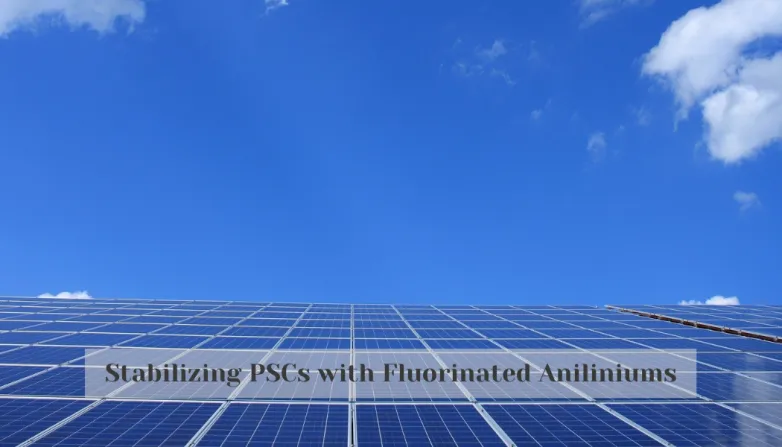Stabilizing PSCs with Fluorinated Aniliniums
Jul 14, 2023 02:50 PM ET
- New method developed by EPFL, University of Toronto and University of Kentucky enables perovskite solar cells to be more durable and efficient under high temperatures and humidity. Quasi-steady-state power-conversion efficiency of 24.09% achieved. Could bring us closer to large-scale deployment of this photovoltaic tech.

Researchers from EPFL, the University of Toronto, and the University of Kentucky have developed a method to improve the high-temperature stability of perovskite solar cells (PSCs). By incorporating fluorinated aniliniums in the device's interfacial passivation step, they were able to reduce degradation caused by progressive ligand intercalation. This technique resulted in a certified quasi-steady-state power-conversion efficiency of 24.09% and enabled the encapsulated PSC to work at its maximum power generation for 1560 hours under high temperature and humidity. This major breakthrough could bring us closer to the large-scale deployment of this photovoltaic technology.
Can Fluorinated Aniliniums Improve High-Temperature Stability of Perovskite Solar Cells?
- The fluorinated aniliniums used in this method act as a functional passivation layer that can reduce the rate of degradation caused by progressive ligand intercalation.
- This passivation layer creates a more stable interface between the perovskite layer and the metal back contact, which reduces the amount of energy lost due to heat.
- This technique enabled the encapsulated PSC to work at its maximum power generation for 1560 hours under high temperature and humidity with a certified quasi-steady-state power-conversion efficiency of 24.09%.
- The use of fluorinated aniliniums could lead to more efficient and more stable PSCs, which could be a major step towards the large-scale deployment of this photovoltaic technology.
- The researchers believe that further work is needed to understand the long-term stability of the fluorinated aniliniums layers and the effects of the other parameters on the stability of the PSCs.
Also read


